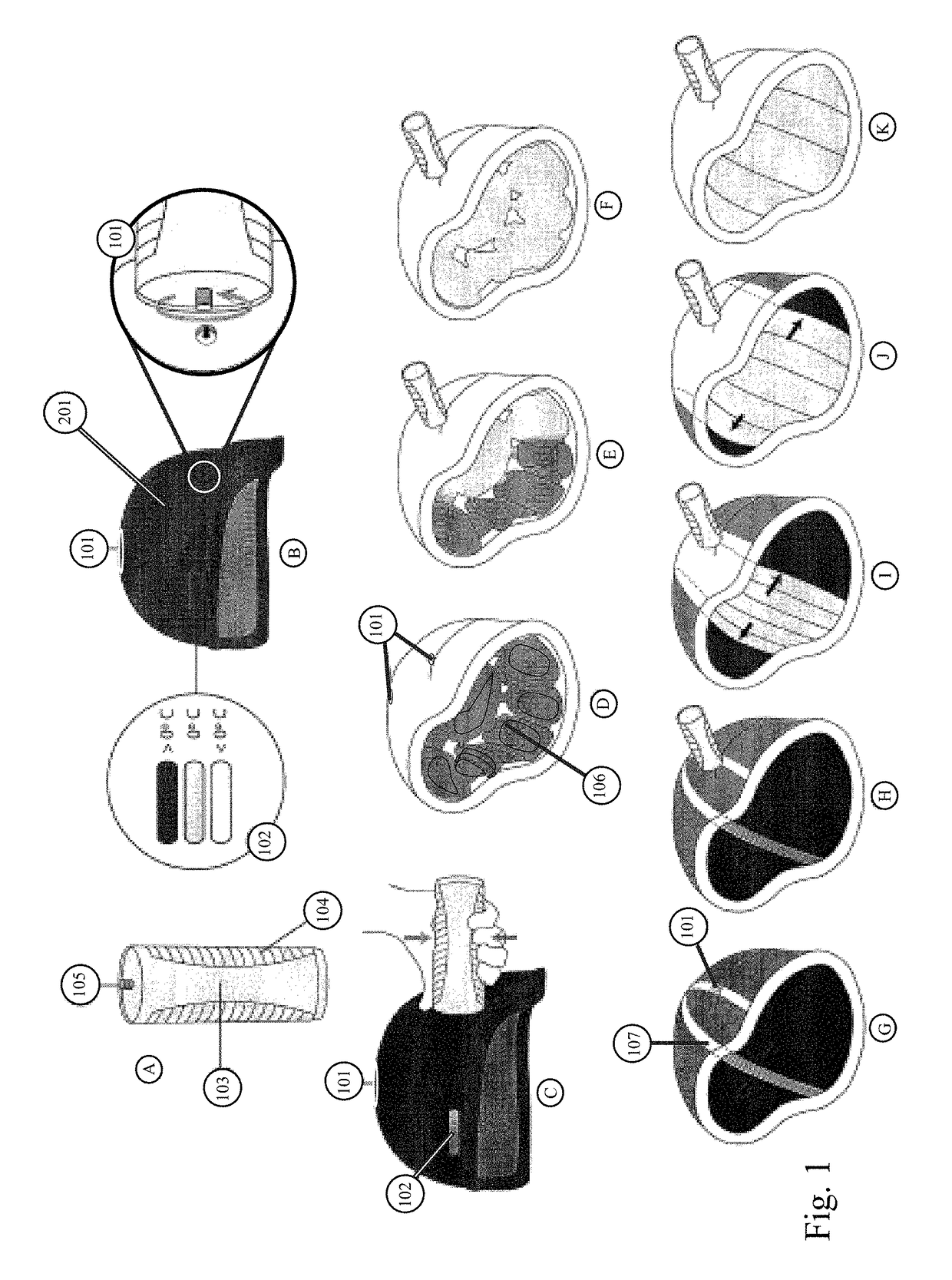Therapeutic brain cooling system and spinal cord cooling system
a cooling system and brain technology, applied in the field of protective headgear, can solve the problems of insufficient antagonization of long-term lesions, inability to prevent deceleration (i.e., diffuse axonal injury) or other types of projectile injuries, direct brain injuries, etc., and achieve the effect of reducing the temperature of the arterial wall and enhancing the induction of brain cooling
- Summary
- Abstract
- Description
- Claims
- Application Information
AI Technical Summary
Benefits of technology
Problems solved by technology
Method used
Image
Examples
Embodiment Construction
[0032]The present invention relates to a brain cooling system comprising a helmet. In one embodiment, the helmet can be for use in military helmets or in non-military helmets. The brain cooling system comprises an inflatable pad, or a set of inflatable interconnected pads, attached to the interior surface of the helmet body, together with a series of valves that allow coolants, including, but not limited to, pressurized liquids or gases to be delivered from a high pressure canister. The use of different coolants, or cooling gases, achieves (at a rate of about 0.1° C. to about 0.5° C. / hour) mild (about 36° C.) or moderate (about 33° C. to about 35° C.), brain hypothermia, which is about 2.5° C. to about 4.5° C. below the normal range of brain temperature which ranges from about 37.5° C. to about 38.0° C. The brain cooling system is thermostatically monitored by the inclusion of a temperature-sensitive probe and temperature display. The display may be a color indicator gauge, which di...
PUM
 Login to View More
Login to View More Abstract
Description
Claims
Application Information
 Login to View More
Login to View More - R&D
- Intellectual Property
- Life Sciences
- Materials
- Tech Scout
- Unparalleled Data Quality
- Higher Quality Content
- 60% Fewer Hallucinations
Browse by: Latest US Patents, China's latest patents, Technical Efficacy Thesaurus, Application Domain, Technology Topic, Popular Technical Reports.
© 2025 PatSnap. All rights reserved.Legal|Privacy policy|Modern Slavery Act Transparency Statement|Sitemap|About US| Contact US: help@patsnap.com



